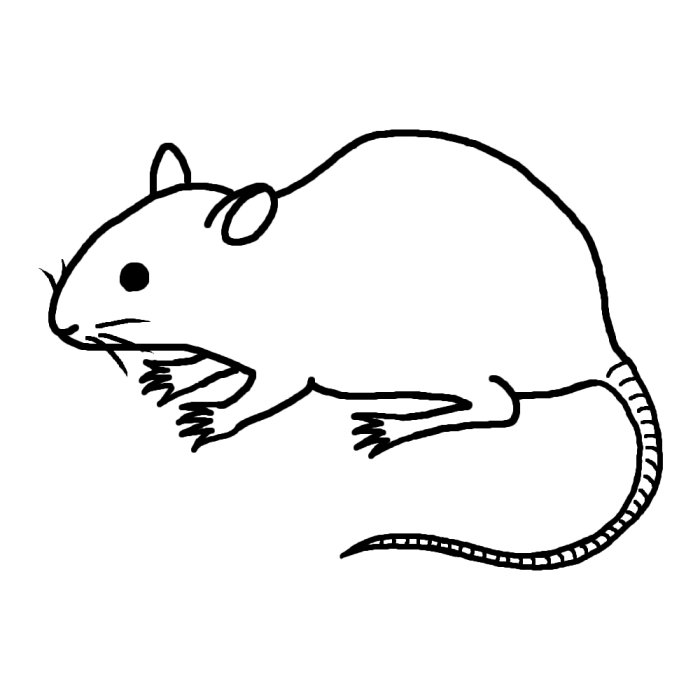
Back to Previous Page
1. Studies on the toxicity of oxidized fats and oils.
We quantitatively evaluated
the uncomfortable feeling experienced by subjects after eating oxidized fats
and oils by assessing pica behavior and locomotor activity.
Instant noodles are prepared by frying boiled noodles in oil. Dried pasta
and rice are usually softened by boiling them before consumption. From
a scientific point of view, the process of boiling corresponds to releasing
crystallized starch in hot water (a process known as gelatinization of
starch). The water in boiled noodles (gelatinized noodles) is vaporized
by frying the noodles in oil to dry them and the gelatinized starch structure
in the noodles is preserved. Preservation of the gelatinized starch in
instant noodles allows the noodles to soften when they are immersed in
boiling water. This is the reason why instant noodles can be cooked quickly.
Since instant noodles are fried in oil, the noodles retain a significant
portion of the oil.

In the
1960s, many incidents of food poisoning were reported because of consumption of
spoiled instant noodles. In those years, instant noodles were mainly sold in
small grocery stores and were frequently kept out in the open outside the shop.
The instant noodles kept outside the shop were exposed to strong sunlight as
well as high temperature because of which the oil in these noodles was oxidized
quickly. Consumers who ate such instant noodles developed food poisoning and
reported symptoms like shivering, diarrhea, and vomiting, amongst other
symptoms. Incidentally, no deaths were attributed to these food poisoning
incidents.

The
cause of these food poisoning events was determined to be the oxidized oil in
instant noodles. Oils react easily with oxygen. Oxidation of fats and oils results
in the formation of hydroperoxide, which is the first product of oxidation. This
hydroperoxide is oxidized further to form aldehydes and ketones (secondary oxidation
products). Humans can detect the odor of the secondary oxidized products as the
strong odor of deterioration. However, the oxidized instant noodles were
seasoned with sauce and ketchup, which helped to mask the odor of the oxidized
fats. Normally, oil in instant noodles stored at room temperature is not
oxidized rapidly, and therefore, concerns regarding food poisoning are
unnecessary in such cases. However, the oil in instant noodles stored under
sunlight and high temperature is oxidized quickly and the chances of developing
food poisoning increase.
A set of criteria regarding
the quality of fat in instant noodles was put in place by the Japanese
government in the wake of food poisoning incidents such as those described. Currently,
the criteria for the quality of fats in instant noodles are strictly adhered to,
and food poisoning incidents related to deteriorated instant noodles is merely
occurred.

The toxicity of foods and edible materials is usually assessed using experimental animal models like rats or mice. These tests are normally evaluated by acute, semichronic or chronic toxicity test. The type of toxicity was determined on the basis of whether the substances had a lethal effect on the rodents. The toxicity of deteriorated oil has been also evaluated by similar tests. These tests showed that the degree of oxidation required for the oil included in instant noodles to cause death of rats or mice is very high. In contrast, the extent of oil oxidation that has been seen in the deteriorated instant noodles that caused food poisoning incidents is not the same as that seen in cases of lethality. People who consumed deteriorated instant noodles developed food poisoning, which was evident from their symptoms, such as shivering, diarrhea, and vomiting, but these people did not die because of the oxidized fat consumption; this is an important finding. Owing to the fact that rodents cannot vomit, it is not possible to evaluate the degree of discomfort due to symptoms such as nausea and chills in
rodents.
For quantitative evaluation of the degree of discomfort, we used pica behavior and the locomotor activity of rodents as criteria for judging the physiological effects of the oxidized fats and oils fed to the animals. Pica behavior is a behavior characterized by eating a nonfood substance such as kaolin and is related to the degree of discomfort such as nausea and chills experienced by animals. Locomotor activity is also related to the degree of discomfort in animals. Therefore, demonstration of such behavior by animals is related to the neurotoxicity experienced by these animals. We administered oxidized fats and oils extracted from deteriorated instant noodles to rats to evaluate the degree of discomfort. Our results showed that fat and oil with 100 or more mEq/kg of peroxide value (PV) induced significantly greater pica behavior and lower locomotor activity than those seen in the control group. This level of oxidation is fairly low compared to those previously reported in an evaluation of an acute toxicity test. The oxidation level at which rats demonstrated pica behavior and reduction in locomotor activity is similar to oxidation levels reported to have caused food toxicity incidents in humans. Consequently, we considered the evaluation of toxicity caused by oxidized fats and oils by using pica behavior and locomotor activity to provide realistic results.
N. Gotoh, H. Watanabe, R. Osato, K. Inagaki, A. Iwasawa, and S. Wada, Novel
approach on the risk assessment of oxidized fats and oils for perspectives
of food safety and quality. I. Oxidized fats and oils induces neurotoxicity
relating pica behavior and hypoactivity. Food Chem. Toxicol. 44, 493-498 (2006) [Abstract]
F. Kitamura, H. Watanabe, A. Umeno, Y. Yoshida, K. Kurata, and N. Gotoh, Oxidized trilinoleate and tridocosahexaenoate induce pica behavior and change locomotor activity. J. Oleo Sci. 62, 207-212 (2013). [Paper (pdf)]